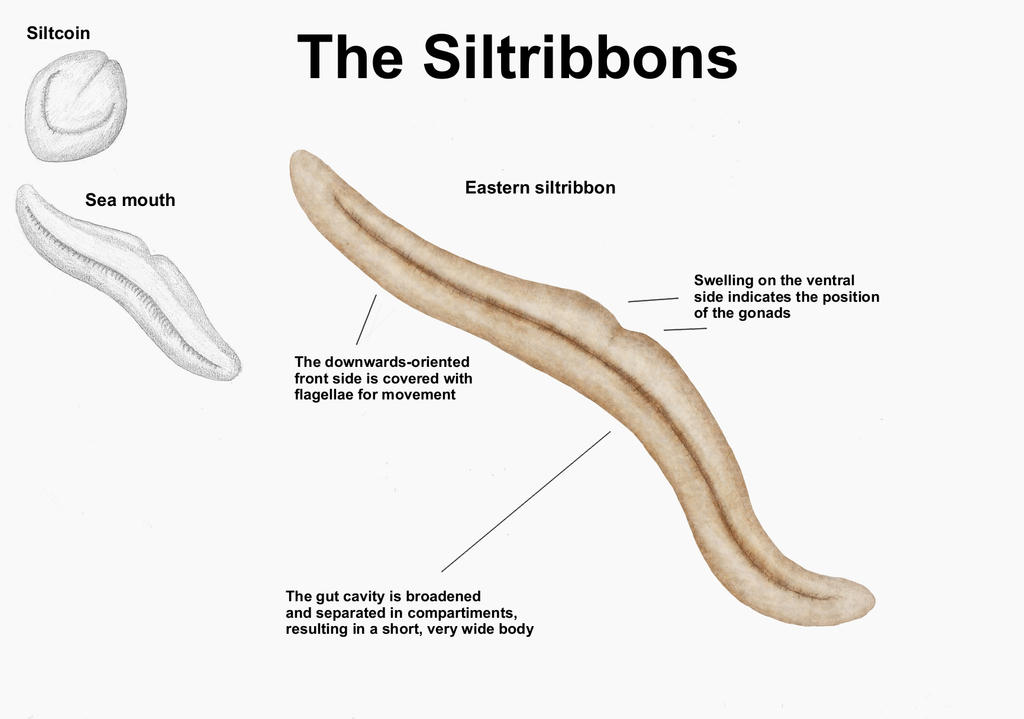ShopDreamUp AI ArtDreamUp
Deviation Actions
Suggested Deviants
Suggested Collections
You Might Like…
Description
The siltribbons are a derived group of xenonematodes and similarly to the distantly-related vectors, their original body plan has changed extremely. The dorsoventral axis is extremely shortened, while the lateral axis is strongly extended, resulting in a very short, very wide creature that crawls over the ground with its mouth directed at the bottom and its anus on the top. This change is the result of its lifestyle feeding on microorganism mats, where covering a space as big as possible at once was the selecting factor. For this, the entire digestive tract has broadened and divided into compartiments to retain its shape and allow efficient digestion. The majority of the body is the gut and its diverticles, the gonads take up the space in two bulges on the ventral side. A real circulatory, respiratory and excretory system are absent; oxygen is absorbed and waste products are excreted through the skin, while flagellae in the body cavity move the fluid around. The majority of siltribbons are deep-sea dwellers in oxygenated waters, where the microorganism mats are relatively undisturbed. Curiously, the trilateral sulphozoans of the anoxic parts of the oceans have brought forth similarly-shaped grazers.
Siltcoin: This shape is present among the species that live in shallow waters. The larger bottom surface allows for a more firm ground contact and less conspicious shape, to withstand the currents and more numerous predators. Instead of just grazing microbial mats, siltcoins often eat the entire sediment to feed on the mesopsammon; to avoid currents and predators altogether, many species live in the sediment.
Sea mouth: This group contains the pelagis species of the siltribbons, usually swimming in the bathyal to abyssal areas in the oceans, filter-feeding on the marine snow. To stay suspended, the flagellae cover the entire body rather than just the underside. In this group, the largest species are present, reaching up to 30 cm in width.
Siltcoin: This shape is present among the species that live in shallow waters. The larger bottom surface allows for a more firm ground contact and less conspicious shape, to withstand the currents and more numerous predators. Instead of just grazing microbial mats, siltcoins often eat the entire sediment to feed on the mesopsammon; to avoid currents and predators altogether, many species live in the sediment.
Sea mouth: This group contains the pelagis species of the siltribbons, usually swimming in the bathyal to abyssal areas in the oceans, filter-feeding on the marine snow. To stay suspended, the flagellae cover the entire body rather than just the underside. In this group, the largest species are present, reaching up to 30 cm in width.
Image size
1731x1215px 339.64 KB
© 2014 - 2024 Ramul
Comments3
Join the community to add your comment. Already a deviant? Log In
Now that's a clever design.



































